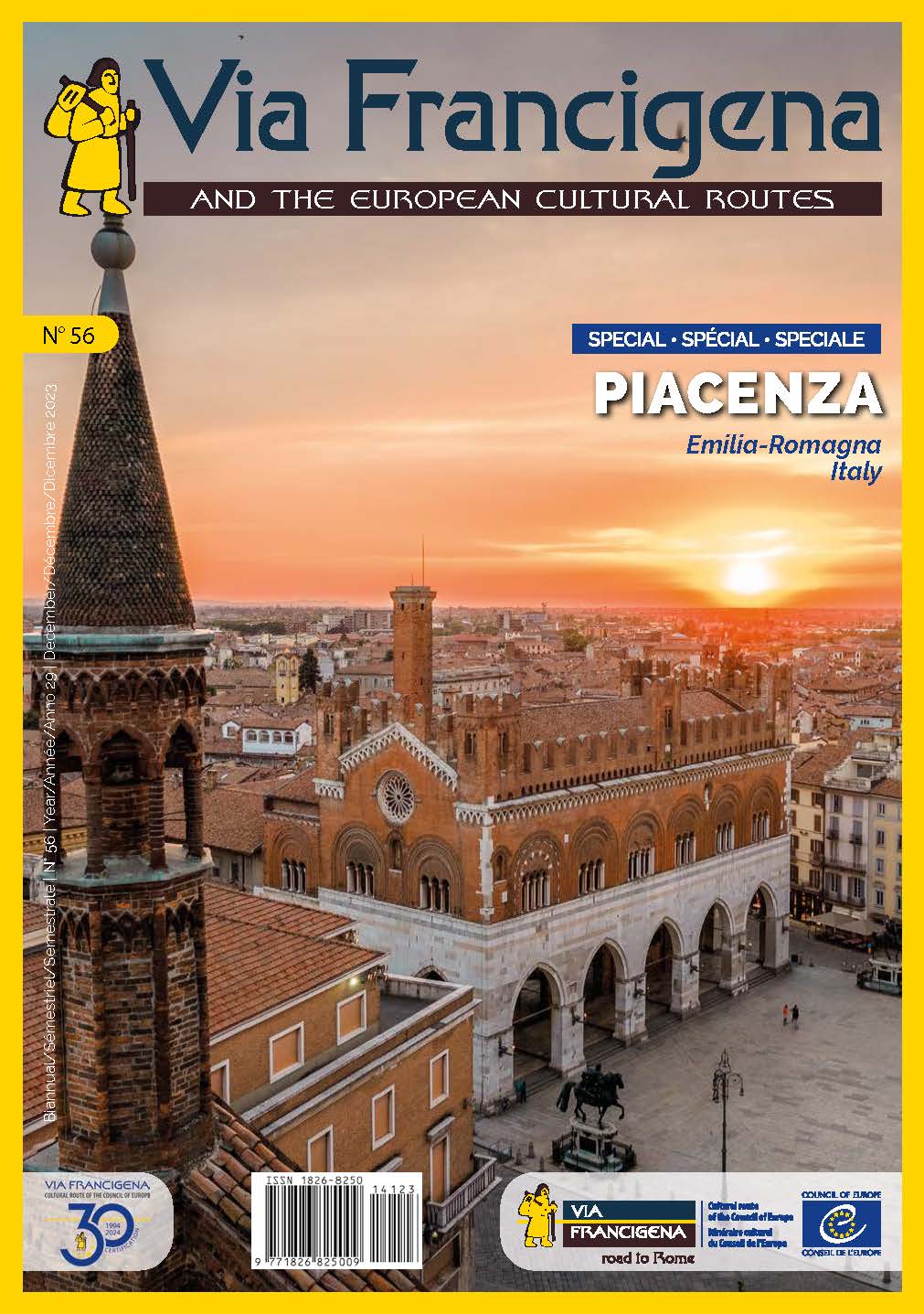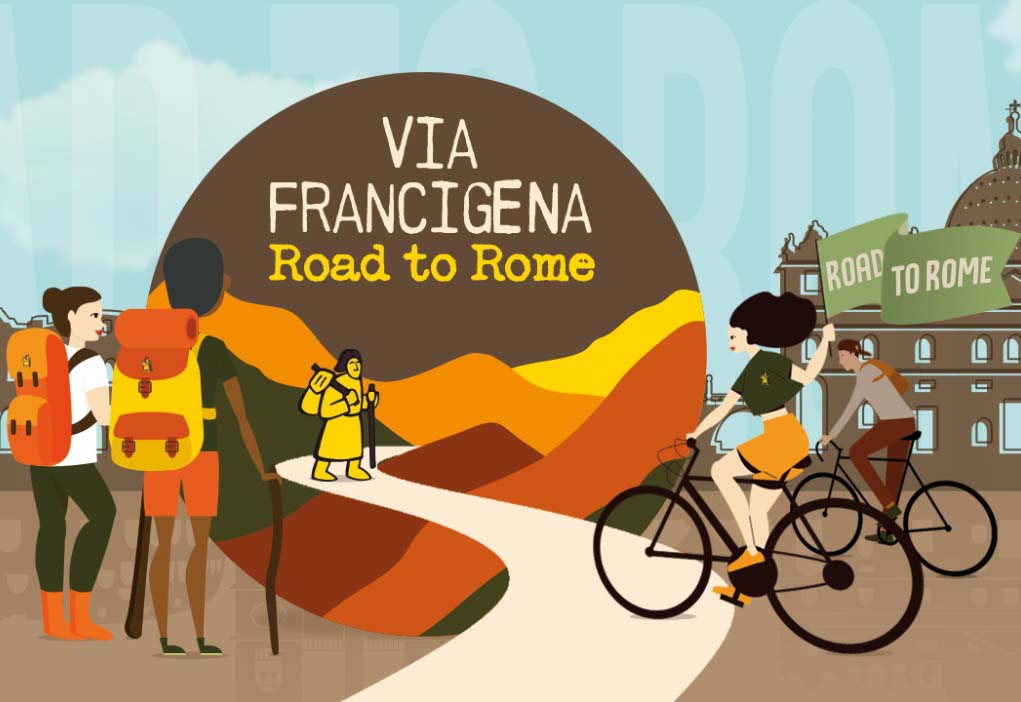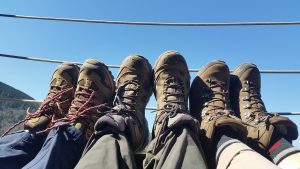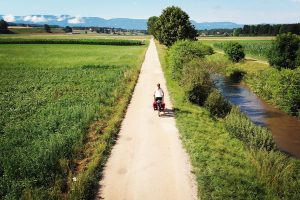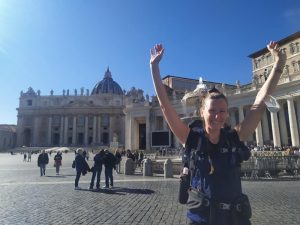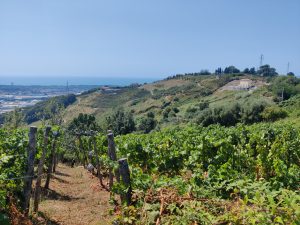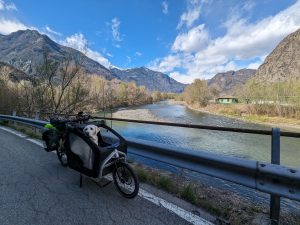Welcome to the sixth chapter of our travel journal, chronicling the entire official route of the Via Francigena from south to north in celebration of the Jubilee Year 2025.
Spanning 3,200 km, this historic medieval pilgrimage route crosses five countries—England, France, Switzerland, Vatican City, and Italy—passing through sixteen regions and over six hundred municipalities. The route, suitable for both walkers and cyclists, begins in Kent, England, and traverses Hauts-de-France, Grand Est, and Bourgogne-Franche-Comté in France; the cantons of Vaud and Valais in Switzerland; and the Italian regions of Valle d’Aosta, Piedmont, Lombardy, Emilia-Romagna, Liguria, Tuscany, Lazio, Campania, and Puglia, culminating in Vatican City in Rome—the symbolic heart of the Jubilee.
For this series of regional features, created in collaboration with Regione Lazio, we have chosen to travel northwards, beginning in Santa Maria di Leuca—Finibus Terrae in Puglia. Our aim is to recount the Via Francigena from south to north, taking you with us as we uncover the beauty, history, and culinary traditions of each region. Along the way, we’ll offer travel tips, highlight key stages, and share intriguing facts.
Shall we begin our journey?
Let’s set off!
The Via Francigena in Liguria
The Via Francigena in Liguria is more than just a physical route—it is a journey through memory, nature, and the soul of a unique land. From sea to mountains, from ancient flavours to enduring legends, each step is a chance to delve into the past and rediscover oneself.
Although short in distance, the Ligurian stretch of the Via Francigena is rich in character, offering alternative routes and contrasting landscapes. A historic crossroads of paths and a commercial hub, Liguria’s single stage on the route serves as a vital link between northern and central Italy.
Contents
History: Sarzana, where the Camino de Santiago meets the Via Francigena
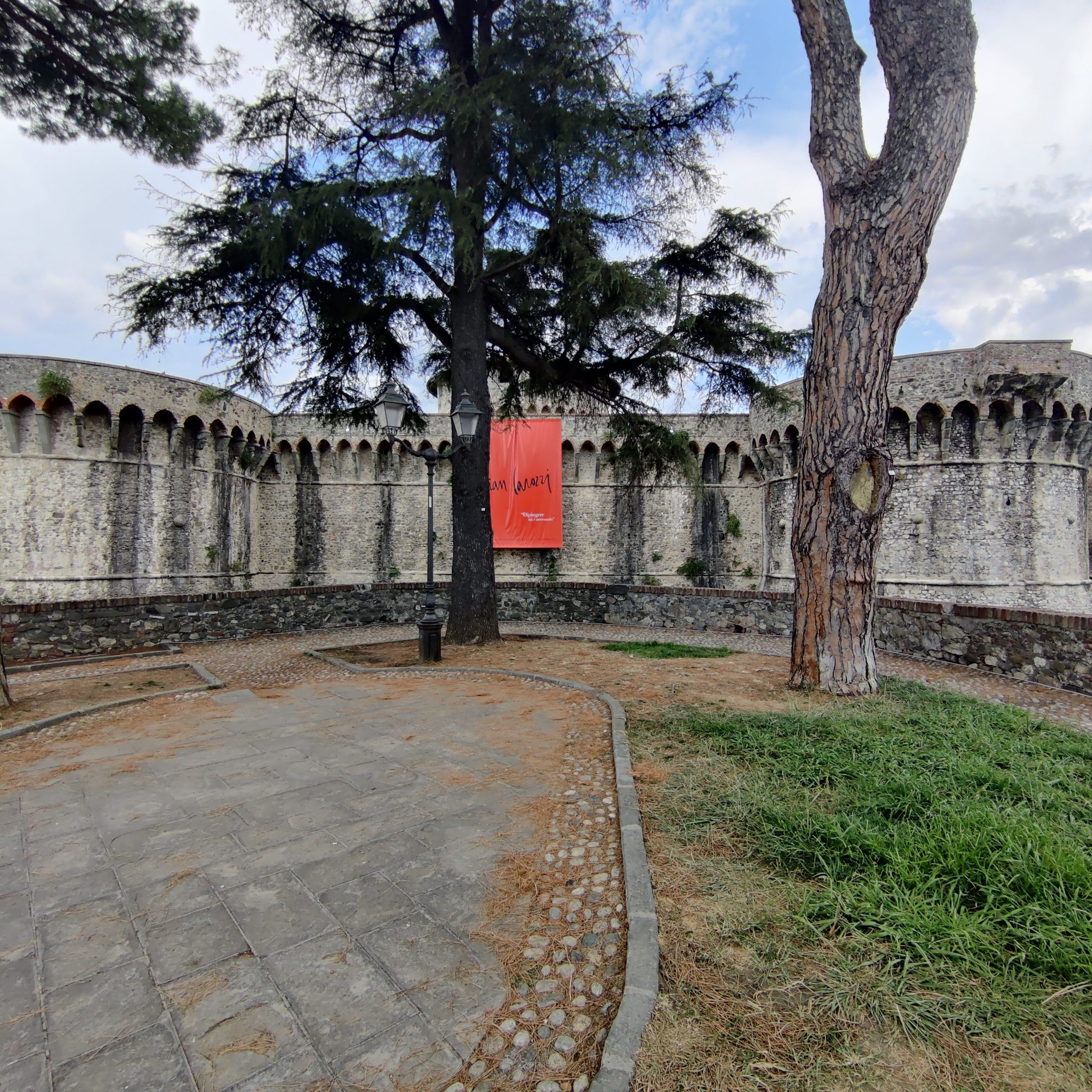
In the heart of Ligurian Lunigiana lies Sarzana, historically connected to ancient Luni. This town marks a unique convergence of two of Europe’s most iconic pilgrimage routes: the Via Francigena, stretching from Canterbury to Puglia, and the Camino de Santiago, leading westward to Santiago de Compostela. Ships once set sail from Luni’s port bound for Spain, making this a key junction of spiritual and cultural exchange.
Sarzana is the location of the first stage along the Via Francigena where the sea comes into view: the Foce del Magra. This evocative site, where the River Magra flows into the Ligurian Sea, has long been a place of passage and pause. For medieval pilgrims, glimpsing the sea was rare and laden with symbolic meaning—a sign of openness to the world and the unknown.
The intersection of these routes has, over time, fostered countless stories of meetings, cultural fusion, and religious syncretism. Sarzana is not just a geographical waypoint—it is a living crossroads, where paths converse and pilgrims’ footsteps intertwine.
Renowned for its international cultural fairs and artisan traditions in wood and wrought iron, Sarzana’s soul lies in its historic centre along Via Mazzini. Here stands the Cathedral of Santa Maria Assunta, adorned with marble works including Gothic and Renaissance altars by Leonardo and Francesco Riccomanni. The cathedral also houses the precious Cross of Master Guglielmo (1138 AD).
Nearby, the Church of Sant’Andrea—Romanesque in origin with Renaissance and Baroque elements—reflects the city’s layered history. Directly opposite lie the remains of a tower once owned by the Bonaparte family, ancestors of Napoleon.
Piazza Matteotti hosts the Town Hall, built between the 15th and 16th centuries, while at the eastern edge of the old town rises the Citadel—commissioned by Lorenzo the Magnificent—complete with monumental bastions and moats.
To the north, the hilltop Fortress of Sarzanello commands panoramic views over the Magra valley and the Apuan Alps. Built in the 14th century atop an earlier settlement, it stands as a symbol of Sarzana’s frontier heritage.
A Curious Note: the Jubilee and Santiago
To mark the occasion of the Jubilee Year 2025, and thanks to the strategic location of Sarzana—and even more so, of Luni—where two of Europe’s historic pilgrimage routes intersect, the Italian Ministry of Tourism and the European Association of the Via Francigena (AEVF) have launched a promotional initiative. They have established a dedicated stand within Santiago Airport to raise awareness of the Via Francigena. As a crossroads for pilgrims from around the world, the Spanish city of Santiago has become a key hub for the global promotion of the Via Francigena.
Art and Culture: Sarzana Castle, Luni, and the roman Amphitheatre
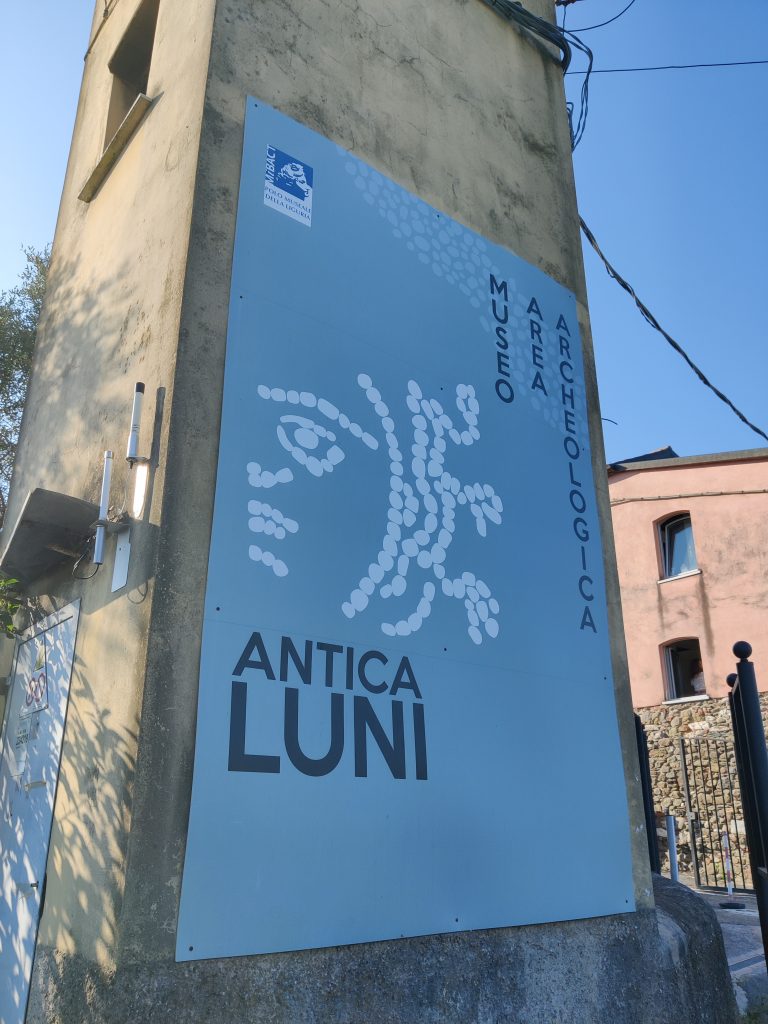
The cultural landscape of southern Liguria is deeply marked by its layers of history. Towering over Sarzana is the Firmafede Fortress, also known as the Citadel of Sarzana, built in the 15th century by the Florentines and later reinforced by the Genoese. With its bastions and imposing towers, it stands as one of the finest examples of Renaissance military architecture in Liguria. Today, it hosts exhibitions, events, and offers panoramic views of the mountains and coastline—a living testament to Sarzana’s strategic and defensive past.
Equally renowned is the Castle of Sarzanello, perched high on the surrounding hills, commanding views over the Magra Valley. Commissioned by Lorenzo the Magnificent, it is built on a double triangular plan, linked by a bridge and surrounded by a moat. Although the original drawbridge no longer exists, the castle remains accessible and evokes an atmosphere rich in medieval charm.
Not far from Sarzana lies the ancient city of Luni, once a major Roman colony and commercial hub at the mouth of the River Magra. Today it is an extraordinary archaeological site, where visitors can explore the ruins of the settlement, temples, and above all the striking Roman amphitheatre. Still clearly recognisable and once capable of seating thousands, it continues to host cultural events to this day. In Roman times, however, it was the stage for gladiatorial games, fairs, and public ceremonies.
This site speaks of the cultural and social might of the Roman Empire, and of its ability to blend with local traditions—shaping a regional identity that endures to this day.
Walking among the ruins of Luni is like stepping into another era, where art and beauty were woven into daily life.
A Curious Note: the legend of Luni
According to an old legend, the city of Luni was attacked and ravaged no fewer than eight times throughout its history. The first destruction is said to have occurred in 856 AD at the hands of the Normans. Fragmentary medieval sources recount how a Norman leader named Hasting landed with his fleet on the Ligurian coast, mistakenly believing he had reached Rome. He was deceived by the city’s grandeur and the River Magra, which he mistook for the Tiber.
Eager to conquer what he believed to be the capital of the Empire, Hasting devised a ruse. He spread news of his own death and expressed a desire to convert to Christianity as his dying wish. The citizens of Luni, believing him sincere, allowed the supposed funeral procession to enter the city. Once within the walls, the Normans sprang their trap—attacking the population, killing the bishop and many townsfolk, and plundering the city’s riches. Luni was left in ruins, and so, legend has it, began the decline of the once-splendid Roman city.
Traditions: the history of the Via Francigena in Liguria, the coastal and mountain routes, and the Fortilizio della Brina
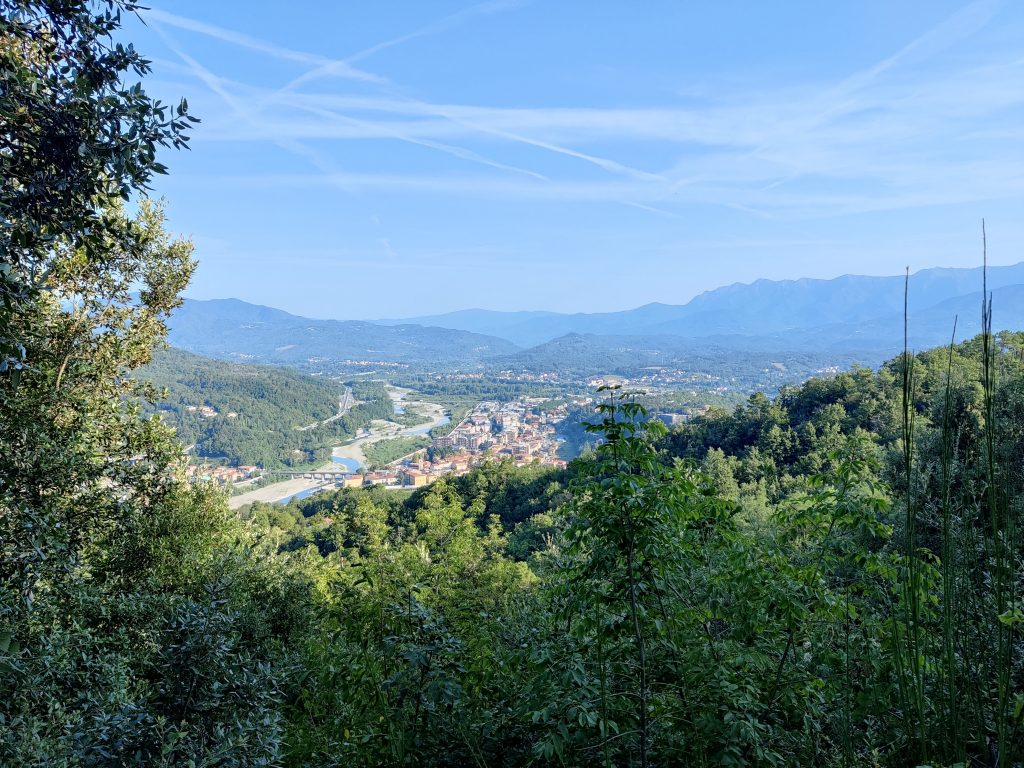
The Ligurian stretch of the Via Francigena possesses a unique feature: it follows two parallel routes—one along the coast, the other through the mountains. Both offer distinct yet equally enriching experiences.
The coastal route provides breathtaking views over the Ligurian Sea, the scent of Mediterranean scrubland, and the impression of walking suspended between sky and water. The mountain path, by contrast, winds through shaded woodlands, panoramic ridgelines, and ancient transhumance trails. The existence of these dual routes stems from historical and climatic considerations—pilgrims would take the mountain trail in summer, while the coastal path was preferred in winter or when the high route was impassable.
Nestled along the mountain route lies the Fortilizio della Brina, an ancient fortification built in the mid-11th century at the behest of the Bishops of Luni. It was erected in opposition to the Malaspina family, who controlled the coastal zone, and it occupies a strategic position along the hill paths.
This segment of the Via Francigena preserves many traditions tied to medieval pilgrimage: ancient ospitali (hostels), countryside chapels, and devotional shrines—such as that dedicated to Saint Blaise, the patron saint of farmers.
A Curious Note: the Fortilizio
The hill and castle of Brina were long at the heart of conflict between the noble Malaspina family and Bishop Enrico da Fucecchio of Luni. The contention arose from the site’s strategic control over key trade routes—a prized possession for both secular and ecclesiastical powers.
A Curious Note: The Jubilee and Santiago
To mark the occasion of the Jubilee Year 2025, and thanks to the strategic location of Sarzana—and even more so, of Luni—where two of Europe’s historic pilgrimage routes intersect, the Italian Ministry of Tourism and the European Association of the Via Francigena Ways have launched a promotional initiative. They have established a dedicated stand within Santiago Airport to raise awareness of the Via Francigena. As a crossroads for pilgrims from around the world, the Spanish city of Santiago has become a key hub for the global promotion of the Via Francigena.
bishop and many townsfolk, and plundering the city’s riches. Luni was left in ruins, and so, legend has it, began the decline of the once-splendid Roman city.
Gastronomy: Sgabei, Panizza, and Cima
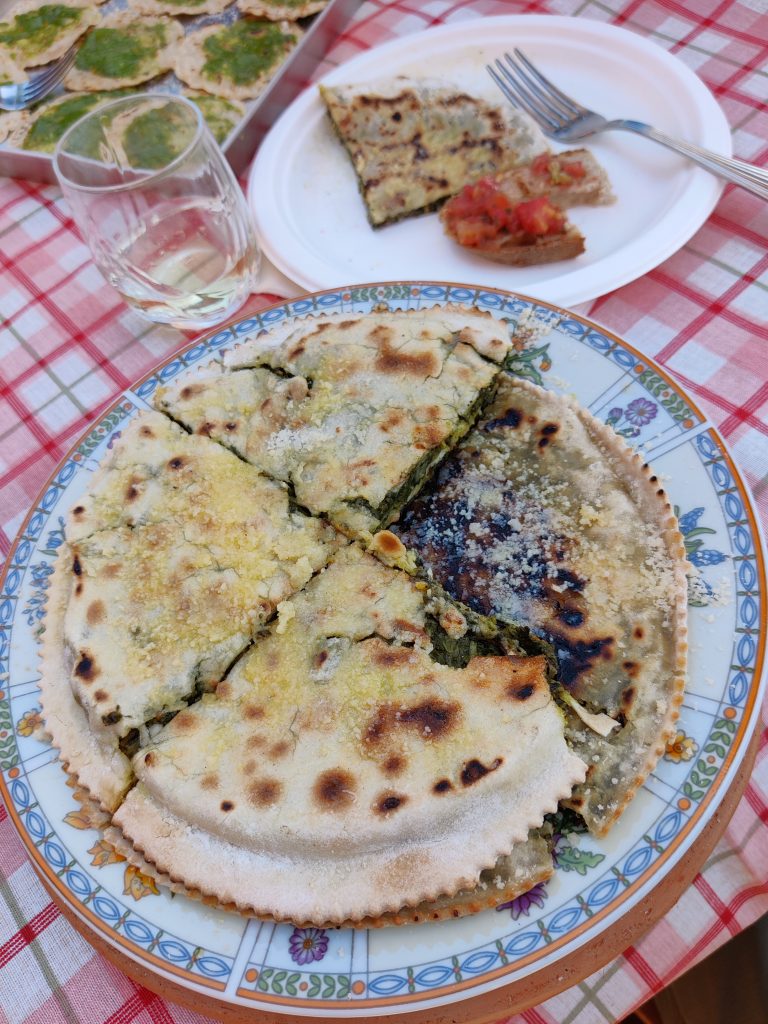
A journey along the Via Francigena would not be complete without savouring the local cuisine. Liguria, particularly the Lunigiana area, is rich in simple, rustic flavours—born of necessity and the land, but now widely appreciated throughout the region.
We begin with a beloved local classic: sgabei. These are strips of leavened dough, fried and served hot. Traditionally made using leftover bread dough, they were once a staple for farmers, who would fry them in oil or lard during village festivities and take them to the fields. Today, sgabei are a popular feature at fairs and along the pilgrimage route, often filled with local cured meats such as mortadella di Lunigiana or lardo di Colonnata.
Next, we have panizza, a firmer version of chickpea farinata, typically cut into sticks and often fried. Native to the mountainous regions, it is light, flavourful, and ideal for those needing energy before setting off again.
Lastly, no visit would be complete without tasting cima—a more elaborate dish made from veal breast, stuffed with vegetables, eggs, cheese, and sometimes pine nuts. Traditionally prepared with whatever was available in the kitchen, it has become a hallmark of Genoese cuisine, encapsulating the Ligurian philosophy that nothing goes to waste and everything is put to good use. It is said that grandmothers used to teach their children to sew it shut with needle and thread.
A curious note: how to cook cima
Many superstitions and legends surround the preparation of cima. Given its complexity, the recipe is sometimes likened to a magical ritual or a form of culinary witchcraft. If not prepared properly, the stuffed veal breast may burst during cooking, spilling its prized filling into the water and leaving behind a bland shell of meat. Unsurprisingly, a host of folkloric rituals are associated with ensuring its success.
One such legend suggests that preparation must begin at dawn, without any distractions or morning vanity. A broom should be placed upside down beneath the cooker hood, bristles facing upwards. It’s said that if a witch tries to enter the kitchen, she will be compelled to count every bristle—giving the cook enough time to finish sewing and get the dish on the stove undisturbed. The Genoese folk song “A Cimma” recounts other symbolic gestures too, such as pricking the meat during cooking and the tradition of letting the youngest bachelor in the household be the first to slice it—a small yet meaningful honour.
Walking ideas for a weekend or short break
As mentioned in the introduction, the Via Francigena passes through Liguria in a single yet highly significant stage. Unlike other regional sections, this guide offers one principal route. However, if you’re eager for a longer adventure, here are some weekend walking suggestions. You can also view the full route to see how this stretch connects with others in nearby regions.
Two-Day Itinerary: (Aulla – Sarzana – Massa)
Day 1: This Ligurian weekend journey begins in Aulla, in the province of Massa Carrara (Tuscany), and heads towards Sarzana, crossing into Ligurian territory. The stage is a demanding 17.4 km, primarily along scenic trails, offering a rewarding first glimpse of the sea. Along the way, you’ll pass through charming ancient villages and key sights such as the ruins of the Brina Castle, finishing in the picturesque town of Sarzana.
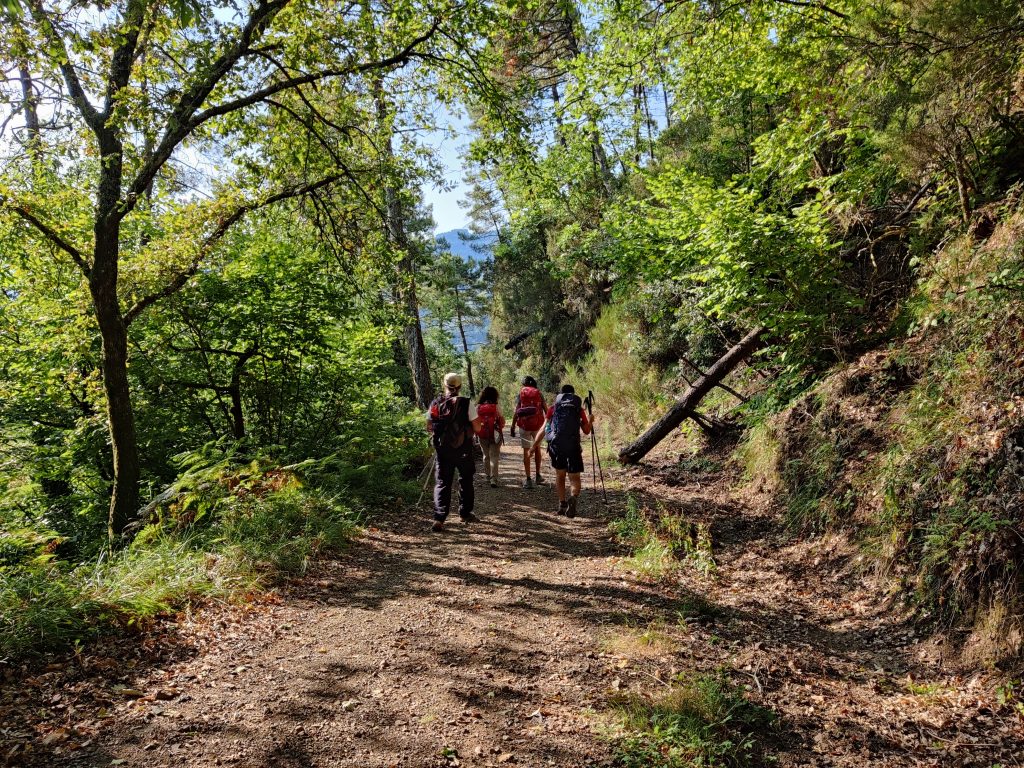
Day 2: The second day leads back into Tuscany, from Sarzana to Massa—a challenging 28.6 km. This stage is largely flat, with the main highlight being the archaeological site of Luni, the ancient Roman port from which many pilgrims once departed for Santiago. After passing through Avenza, the route continues through vineyard-covered hills between Avenza and Massa, offering constant panoramic views of the Apuan Alps and the sea, before arriving in the historic centre of Massa Carrara.

Some useful tips
1. Prepare Your Gear
- Hiking boots: choosing the right footwear is essential, especially for long distances. Opt for sturdy, comfortable shoes with good breathability and support. Lightweight trekking boots are ideal for extended walks. The heavier your rucksack, the more important it is to wear high-ankle boots to protect your back and ankles. See some suggestions from our partner Garmont here.
- Backpack: pick a lightweight, comfortable backpack with adjustable straps and good ventilation. Don’t overpack — try to keep it under 10–15% of your body weight. Only bring the essentials. Recommended models from Ferrino can be found here.
- Clothing: bring breathable, comfortable, and lightweight clothes. Depending on the season, pack a waterproof jacket for rain or wind, and a hat for sun protection. If you’re unsure where to buy these items, check here.
- Trekking poles: extremely helpful for reducing strain on your knees, especially on inclines and descents. Browse options here.
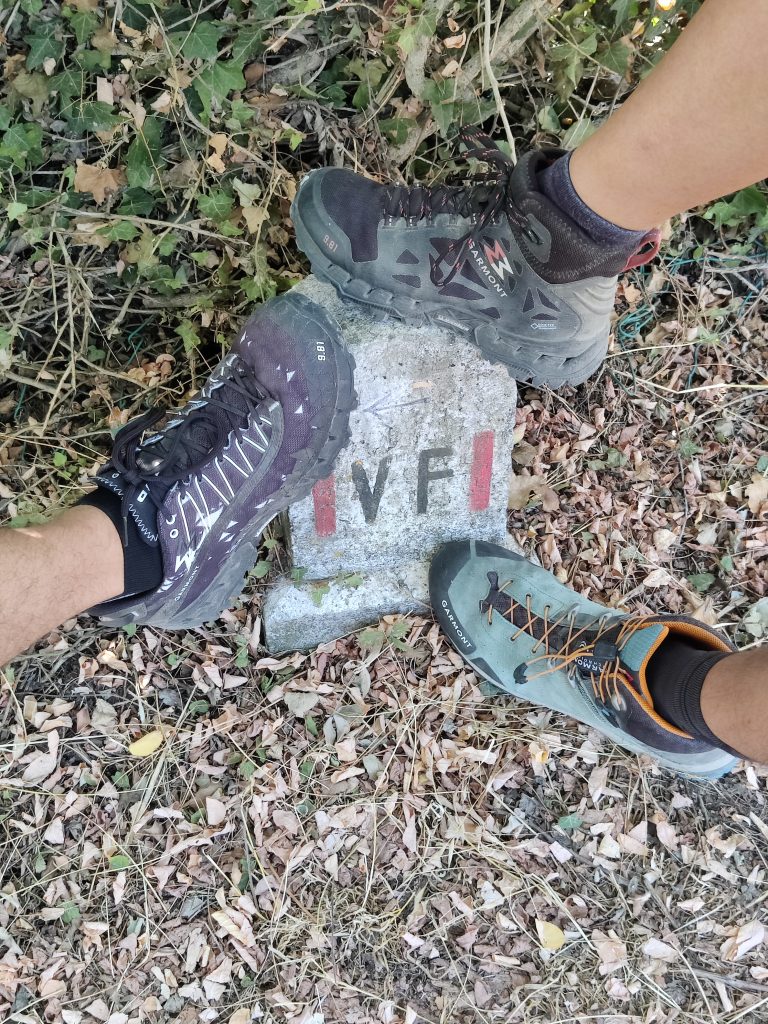
2. Plan Your Route and Stages
- Distance and timing: daily walking distances typically range from 15 to 25 km. If you’re not used to walking long distances, start with shorter stages. Consider spreading the journey out over more days according to your ability.
- Accommodation: along the route, you’ll find plenty of options — hostels, B&Bs, agritourism farms, and convents. Some areas also offer pilgrim refuges. Book in advance, especially during peak seasons (spring and summer).
- How to get there: there are many ways to reach the Lazio region, but not all are eco-friendly or linked to the Via Francigena. We recommend travelling with FlixBus or TrenitaliaTPER, both of which offer a 10% discount to holders of the official Pilgrim Passport (Credenziale).
- Adaptability: not all stages have the same difficulty. Be flexible and ready to adapt as needed. Remember: this is not a race, but a personal and spiritual journey.
- Guidebook: to avoid mishaps, we suggest bringing the Via Francigena guidebook by Terre di Mezzo, which includes routes and plenty of practical tips.
- Pilgrim Passport: a must for every true pilgrim. The official Credential of the Via Francigena, available here, offers access to discounts, special rates, and allows you to collect original stamps along your journey.
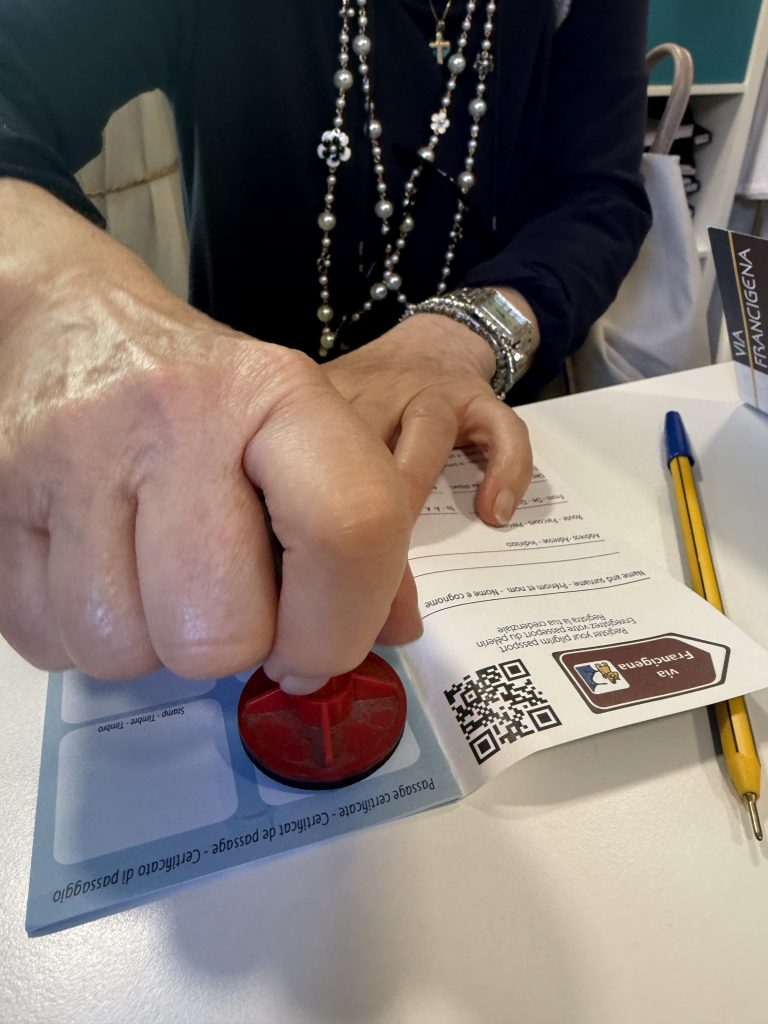
3. Safety and Health
- Water and food: always carry at least 2 litres of water. Some stages may lack easy access to refilling stations, so plan accordingly. Also bring energy-rich snacks such as nuts, cereal bars, and dried fruit.
- Sun protection: the southern Italian sun can be intense, particularly in summer. Use high-factor sunscreen, sunglasses, and a sunhat.
- Rest: listen to your body. Don’t hesitate to stop and rest when needed. Your muscles and joints can take a toll from extended walking, so regular breaks are essential.
This article was published as part of the initiative: Cohesion and Development Fund – Development and Cohesion Plan under the auspices of the Italian Ministry of Culture (Form 33 – Via Francigena – Cross-cutting actions. Project submission form “Communication and Promotion Plan”).






